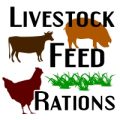More genetically modified (GM) products with nutrition enhancement and medical uses will potentially be released in the market up to 2017 including vaccines and enzyme-rich corn that results in environment-friendly hog raising.

The International Service for the Acquisition of Agri-Biotech Applications (ISAAA) is optimistic there will be more GM or biotechnology products that will have beneficial effect to consumers in the next few years.
“There are (GM crops with) input and output traits in the pipeline,” according to Dr. Randy A. Hautea, ISAAA Global Coordinator in “Crop Biotechnology: Impact and Future Prospects for Food Security and Sustainable Agriculture.”
“These will help ensure food security and alleviation of poverty and hunger.”
GM crops that have the beneficial input traits will benefit farmers in higher yield and profit and reduced exposure to health risks such as pesticide sprays. These include those with resistance to pests and diseases and drought and tolerance to salt, cold, and herbicide.
Their input traits result in higher crop yield. There will also be crops that have high nitrogen use efficiency, enabling plants to require less fertilizer and be produced cheaper.
GM products that have the output traits will benefit consumers and industries.
These products have traits like increased shelf life, increased omega 3, improved nutrition, reduced lignin, and improved quality. These products may be biopharmaceuticals.
For one, there are GM soybeans that have several superior traits. These are high oleic content with reduced transfat, low phytase that reduces phosphorus levels in animal manure, high omega-3 that enhances human health, and high stearic acid that reduces harmful fats.
The Food and Agriculture Organization (FAO) has noted that there are potential GM products that may succeed in the market up to 2017, Hautea cited.
Some of these GM products are already “routinarily” used to enhance nutrition in food or to produce pharmaceutical products. Ensuring food security will continue to be a primary role of GM products.
“The challenge is to produce enough food over the next four decades to meet expected requirement of over nine billion people on less land area, water, and nutrients,” said Hautea.
The need for GM products will even become pressing amid climate disturbances.
Climate change is worsening hunger threats as it may adversely affect health and productivity of crops, livestock, and fisheries.
In its aim to look at the potential of GM crops and other GM products up to 2017, FAO has come up with a publication on “GMOs in the Pipeline: Looking to the Next Five Years in the Crop, Forestry, Livestock, Aquaculture and Agro-industry Sectors in Developing Countries.”
This report looks into the specific kind of GM products that are likely to be commercialized in developing countries over the next five years since 2012 and to discuss their potential implications.
High phytase corn
High phytase corn, which is expected to be soon commercialized in China after its biosafety approval in 2009, is contributing to a more environment-friendly hog production.
Phytase enhancement in corn for feed through GM reduces the release to the environment of potentially-damaging phosphorus.
It will decrease inorganic phosphate supplementation in animals.
“Phytase decreases the excretion of organic phosphorus in feces by 40 percent, thus largely reducing phosphate pollution,” according to GM phytase corn developer Origin Agritech Ltd.
“Animals will directly absorb more phosphate from their feed. In China, annual fecal phosphorus from animals totals 2.5 million tons which has led to serious environmental problem. (Phytase corn) should reduce phosphorus pollution caused by animal waste and excess fertilizer use. Phytic acid in animal manure is a major source of phosphate pollution,” said FAO.
Food processing
GM microorganisms– living organisms that can only be seen through the microscope—bacteria, fungi, and viruses—have been traditionally used in food processing and food ingredient production, noted FAO.
For commercially purposes, GM microorganisms are used to produce enzymes (like phytase)—proteins that catalyze desired chemical reactions.
“Since the early 1990s, preparations containing chymosin, (an enzyme used to curdle milk in the preliminary steps of cheese manufacture) derived from GM bacteria have been available commercially,” according to the FAO. “Many colours, vitamins and essential amino acids used in the food industry are also from GM microorganisms.”
Argentina, Brazil, China, Cuba and India are among developing countries that produce enzyme using GM microorganisms.
Use of GM microorganisms for animal feed has also been a traditional practice in developed countries.
Animal nutrition
There are cases where amino acids and enzymes use GM microorganisms for animal nutrition.
Feed additives supply essential amino acids to feed and poultry even as some livestock feeds lack some essential amino acids.
One GM product beneficial as feed additive is high lysine corn. Lysine, methionine, and tryptophan are among amino acids that are added to diets of animals.
“Most grain-based livestock feeds are deficient in essential amino acids such as lysine, methionine and tryptophan and for high producing monogastric animals (pigs and poultry) these amino acids are added to diets to increase productivity,” according to the FAO.
GM Bacteria
There are bacteria that are used to enhance meat and milk production of animals.
A GM bacteria is used to produce recombinant bovine somatotropin (rBST) in order to more efficiently convert feed into higher yield milk and decrease milk fat in dairy cows.
Certain GM bacteria are also used to improve recombinant porcine somatotropin (rPST) in order to “increase muscle growth, reduce body fat, and improve carcass composition in pigs,” according to FAO.
In general, these GM bacteria are called metabolic modifiers. These are compounds that enable change in physiology and metabolism of animals.
“The hormone is administered by injection and has been approved since the 1990s in several developed and developing countries,” according to FAO.
Vaccine
GM has been instrumental in enhancing animal health through vaccination.
GM vaccines have advantages over conventional vaccines in that these are safe and cheaper. GM vaccines also have more protective immunity.
Important, GM vaccines offer possibility to help people distinguish between vaccinated animals and infected animals.
“Recombinant DNA technology is now used to develop different kinds of vaccines to manage diseases in livestock and fish,” said FAO.
There are vaccines with deletions in genes linked with virulence.
“These gene-deleted vaccines, where pathogens (bacteria or viruses) with deletions in genes associated with virulence or involved in key metabolic pathways, are used as live vaccines,” said FAO.
Among such vaccines that are in the market, according to FAO, are the gene-deleted bovine herpesvirus 1 (BoHV-1) for cattle or viral vector vaccines against poultry diseases such as Marek’s Disease, Fowl Pox and Gumboro or against West Nile virus (WNV) in horses.
GM trees
There are already GM trees in the market. Bt trees were approved in 2002 for commercialization in China. These are the European black poplar and the hybrid white poplar clone GM 741.
As of 2011, these Bt trees represent 1.4 million plants on 300 to 500 hectares, according to FAO.
There are numerous field trials, 700 as reported by Kanowski in 2012, currently being conducted on GM trees of 30 genera. Most of these are in the United States and mostly are on the Populus, Pinus and Eucalyptus species. Other field trials have been approved in China, 84, and in Brazil, 18.
GM animals
As there are ethical concerns on development of GM animals, there are yet no known commercial GM animals in the market. However, for pharmaceutical purposes, the commercialization of a GM animal has been approved for production of pharmaceutical proteins.
“These include the use of GM rabbits to produce conestat alfa, the active substance in Ruconest (a medicine used to treat attacks of hereditary angioedema in adults) and the use of GM goats to produce antithrombin alfa, the active substance in Atryn (used to treat patients who have congenital antithrombin deficiency),” said FAO.
The pharmaceutical proteins come from the animal’s milk. There are also GM animals, particularly mice, that are used for biomedical research
GM fish
While there is no approved GM fish in the market for food use, there are GM fishes for ornamental uses.
“Ornamental GM fluorescent fish have been commercialized in some countries, including the United States, Malaysia and Taiwan Province of China (Hallerman, 2004). These aquarium pets, of the zebrafish and tetra fish species, express fluorescent colour proteins encoded by genes from jellyfish and sea anemone so that they can glow at night,” reported the FAO.
In the US, the AquAdvantage Atlantic salmon is a fast growing fish. It has been modified by adding a Chinook salmon growth hormone gene under an ocean pout antifreeze protein promoter. Its commercial approval is in process.
###
For any questions or interview requests, kindly contact Ms. Analiza C. Mendoza (Growthmagph), 0921-338-3816, 0916-266-6604. This press release is also available on http://growthmagph.com/?p=144. Link to FAO’s “GMOs in the Pipeline …” http://www.fao.org/docrep/016/ap109e/ap109e00.pdf.






